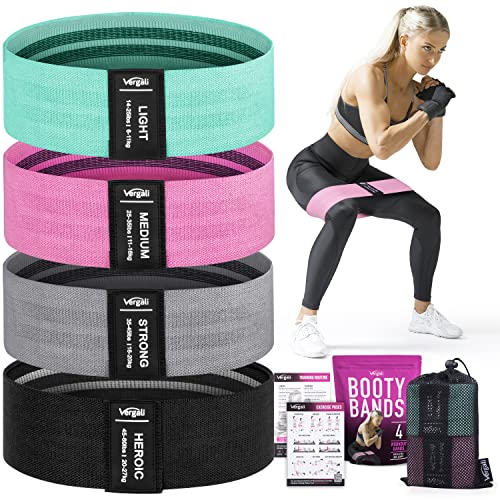When it comes to strengthening your knees, choosing the right exercise equipment can make all the difference.
In this article, I’ll walk you through the top contenders for knee strengthening: suspension trainers, resistance bands, and glute bands.
We’ll explore the benefits of each equipment type, backed by real-life examples and expert insights. From ease of use to portability and effectiveness, we’ll cover it all, helping you make an informed decision to support your knee health journey. So, if you’re ready to discover the best exercise equipment for knee strengthening – let’s get started!
Contents
The Process Behind Our Testing and Final Selection
HOW WE TEST, SCORE & RATE EXERCISE EQUIPMENT
We have tested a wide range of different types of exercise equipment, Each equipment have been scored based on a weighted average of the following nine factors.
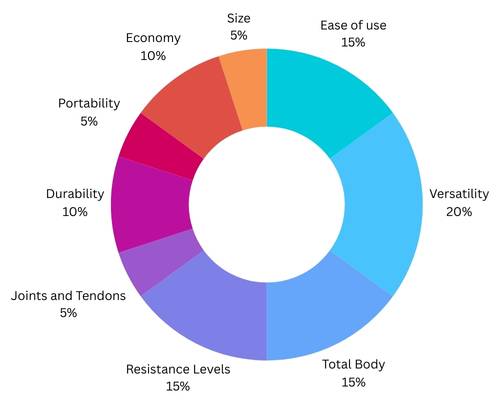
When selecting the winners within the review categories, we choose the equipment that delivers the best results for the scoring factors directly related to the review category.
The equipment is scored using a scale from 1-10. The higher the number, the better performance.
- 10 – Simply amazing.
- 9 – 9.9 – Excellent. Only the best are part of this range.
- 8 – 8.9 – Very high performance, but still room for improvement
- 7 – 7.9 – Good is often good enough. Delivers as expected, and then some.
- 6 – 6.9 – It does the job, but there are far better options.
- 5 – 5.9 – Could be a «show stopper» if the specific score category is of importance to you.
- 4 – 4.9 – An abysmal rating, simply far away from the standard expected.
- < 4.0 – Does not do the job; stay away.
WHY TRUST OUR REVIEWS?
After years of working out from home, I have established a unique expertise and vast experience using all kinds of home exercise equipment.
All tested equipment types have been tried and used extensively, providing me with an excellent platform to score and review each equipment type.
By following my recommendations, you can rest assured you are following the advice of someone who puts his pride in pointing you towards products suited to YOUR unique fitness journey.
The 3 Best Exercise Equipment for Knee Strengthening
“Consider the level of resistance: Opt for exercise equipment with adjustable resistance levels to ensure gradual progression and avoid straining your knees. Additionally, prioritize equipment that allows for low-impact workouts to minimize stress on your joints and tendons.”
- ALL LEVELS, ALL GOALS - TRX GO is a lightweight...
- ONE POUND WONDER - Includes Suspension Training Strap,...
- PROVEN RESULTS – Bodyweight Suspension Training has...
- 【Natural and Durable】Our pull up assistance bands...
- 【Multifunctional for Workout】Adding resistance and...
- 【For All Strength Level】With 5 different strength...
- WON'T PINCH BARE LEGS. This at home workout equipment...
- INCLUDES CARRY BAG. For easy transport we include a...
- NON-SLIP. The perfect blend of cotton and latex ensures...
Suspension Trainer
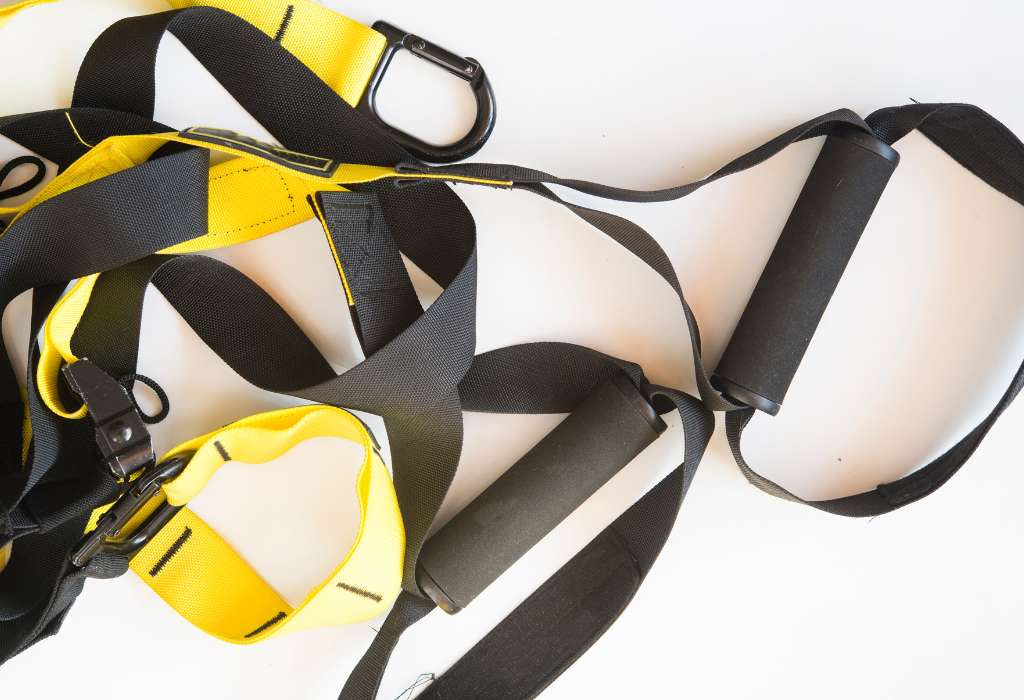
Best For
Quick Facts
Our Verdict
Suspension trainers emerge as a top choice for knee strengthening.
Their unparalleled versatility allows for a wide range of exercises targeting the muscles around the knees, promoting strength, stability, and mobility.
By leveraging bodyweight resistance and adjustable difficulty levels, suspension trainers offer a customizable and low-impact workout experience suitable for individuals of all fitness levels. Moreover, their portability and ease of use make them accessible for home workouts, travel, or outdoor exercise sessions.
With suspension trainers, you can effectively strengthen your knees and improve overall joint health, setting the stage for a more active and pain-free lifestyle.
Click here to read the full suspension trainer review
Product Performance
When it comes to knee strengthening, suspension trainers excel in every aspect. Here’s how they perform:
Joint-Friendly Workouts
Suspension trainers offer joint-friendly workouts that minimize stress on the knees while still providing a challenging workout.
By leveraging your body weight as resistance, they allow you to strengthen the muscles around your knees without subjecting them to heavy impact or strain.
Targeted Muscle Engagement
With suspension trainers, you can target specific muscle groups around the knees, including the quadriceps, hamstrings, calves, and glutes.
By performing exercises like squats, lunges, leg curls, and leg lifts, you can strengthen these muscles, improving knee stability and reducing the risk of injury.
Improved Range of Motion
Suspension trainers promote improved range of motion in the knees, helping to alleviate stiffness and improve flexibility.
By performing dynamic exercises that move through a full range of motion, you can increase joint mobility and reduce the risk of injury during daily activities.
Enhanced Balance and Stability
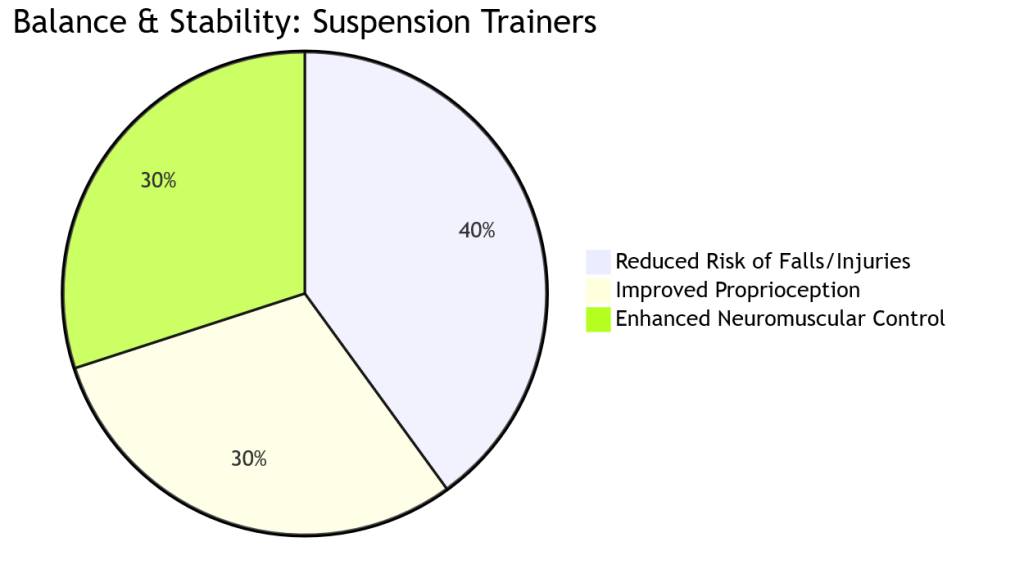
Suspension trainers challenge your balance and stability, which are essential for maintaining proper alignment and reducing the risk of falls or injuries.
By performing exercises that require you to stabilize your body against the instability of the straps, you can improve proprioception and neuromuscular control, enhancing overall knee stability.
Progressive Overload
One of the key principles of strength training is progressive overload – gradually increasing the intensity of your workouts to continue making gains.
Suspension trainers make it easy to apply progressive overload by allowing you to adjust the angle of your body or the length of the straps to increase resistance as you get stronger.
Rehabilitation and Injury Prevention
Whether you’re recovering from a knee injury or looking to prevent future injuries, suspension trainers are an invaluable tool. They provide a safe and effective way to rehabilitate injured knees by gradually strengthening the surrounding muscles and improving joint stability.
Plus, by incorporating them into your regular workout routine, you can help prevent future knee injuries by building strength, flexibility, and resilience.
Resistance Bands

Best For
Quick Facts
Our Verdict
Resistance bands stand out as another excellent choice for knee strengthening.
Their adaptability allows for customizable resistance levels, catering to varying fitness levels and rehabilitation needs. With a plethora of exercises targeting the muscles around the knees, resistance bands offer versatility and effectiveness in improving strength, stability, and mobility.
Their low-impact nature minimizes strain on the joints, making them ideal if you are struggling with knee issues or recovering from injuries. Plus, their compact size and portability ensure you can strengthen your knees anytime, anywhere.
Resistance bands are versatile and accessible tools for enhancing knee health and overall well-being. For me, I never go on vacation or trips without at least one resistance band in my luggage.
Click here to read the full resistance band review
Product Performance
When it comes to evaluating the performance of resistance bands for knee strengthening, it’s essential to consider various factors that contribute to their effectiveness.
Let’s dive deeper into how resistance bands perform in different aspects:
Targeted Resistance
Resistance bands are renowned for their ability to provide targeted resistance to specific muscle groups, making them highly effective for knee strengthening.
By incorporating resistance bands into your workout routine, you can isolate and engage the muscles around the knees, including the quadriceps, hamstrings, glutes, and calves.
This targeted resistance helps to improve muscle strength, endurance, and stability, ultimately enhancing overall knee health and functionality.
Flexibility and Mobility
One of the significant benefits of using resistance bands for knee strengthening is their ability to improve flexibility and mobility in the knee joints.
Unlike traditional weightlifting exercises that often limit range of motion, resistance bands allow for dynamic movements that promote flexibility and mobility.
By performing exercises such as leg swings, hip circles, and lateral Leg Raises with resistance bands, you can effectively increase joint flexibility, reduce stiffness, and enhance overall mobility in the knees.
Low-Impact Workouts
Resistance bands offer low-impact workouts that are gentle on the joints while still providing a challenging stimulus for muscle growth and strength development.
Unlike high-impact activities such as running or jumping, which can put excessive strain on the knees and lead to potential injuries, resistance band exercises involve controlled movements with constant tension throughout the range of motion.
This low-impact nature makes resistance band workouts suitable for individuals of all fitness levels, including those recovering from knee injuries or dealing with joint issues.
Versatile Exercise Options
One of the standout features of resistance bands is their versatility in providing a wide range of exercise options for knee strengthening.
Whether you’re targeting the quadriceps, hamstrings, or other muscles around the knees, resistance bands offer countless exercise variations to suit your needs and preferences.
From basic movements like squats, lunges, and leg extensions to more advanced exercises such as lateral band walks, clamshells, and seated leg curls, there’s no shortage of options to challenge and engage the muscles around the knees effectively.
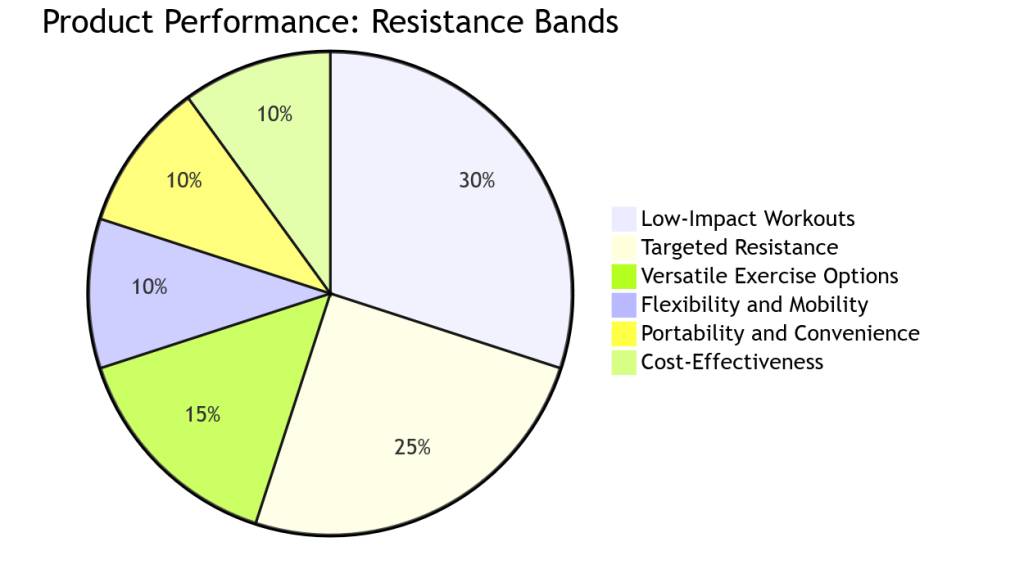
Portability and Convenience
Another advantage of resistance bands is their portability and convenience, making them ideal for home workouts, travel, or outdoor exercise sessions.
Unlike bulky gym equipment, resistance bands are lightweight, compact, and easy to transport, allowing you to perform knee-strengthening exercises wherever you go.
Whether you’re at home, in a hotel room, or even at the park, resistance bands provide a convenient and accessible means of maintaining and improving knee health without the need for expensive gym memberships or specialized equipment.
Cost-Effectiveness
Finally, resistance bands offer a cost-effective solution for knee strengthening compared to other forms of exercise equipment or gym memberships.
With a one-time investment in a set of resistance bands, you gain access to a versatile and efficient tool for targeting the muscles around the knees and enhancing overall knee health.
Additionally, resistance bands are durable and long-lasting, providing excellent value for money over time compared to more expensive fitness equipment options.
Glute Bands

Best For
Quick Facts
Our Verdict
Glute bands emerge as a top choice for knee strengthening due to their targeted activation of lower body muscles, including the glutes and thighs.
By engaging these muscles, glute bands promote stability and support around the knees, reducing the risk of injury and enhancing overall joint health.
Their compact size and portability make them convenient for at-home workouts or on-the-go exercise sessions. With glute bands, you have a versatile and effective tool to strengthen your knees and improve lower body strength, flexibility, and mobility.
Click here to read the full glute band review
Product Performance
Now, let’s take a closer look at how glute bands perform in various aspects related to knee strengthening:
Targeted Muscle Activation
Glute bands effectively target the muscles of the lower body, including the glutes, thighs, and hips, which play a vital role in supporting and stabilizing the knees.
By providing resistance during exercises such as squats, lunges, and hip thrusts, glute bands help activate and strengthen these muscles, ultimately improving knee stability and function.
Adjustable Resistance Levels
Glute bands offer a range of resistance levels to accommodate users of different fitness levels and goals.
Whether you’re a beginner or an advanced athlete, you can choose the resistance level that suits your needs and gradually increase the intensity as you progress. This versatility ensures that individuals of all fitness levels can benefit from using glute bands for knee strengthening.
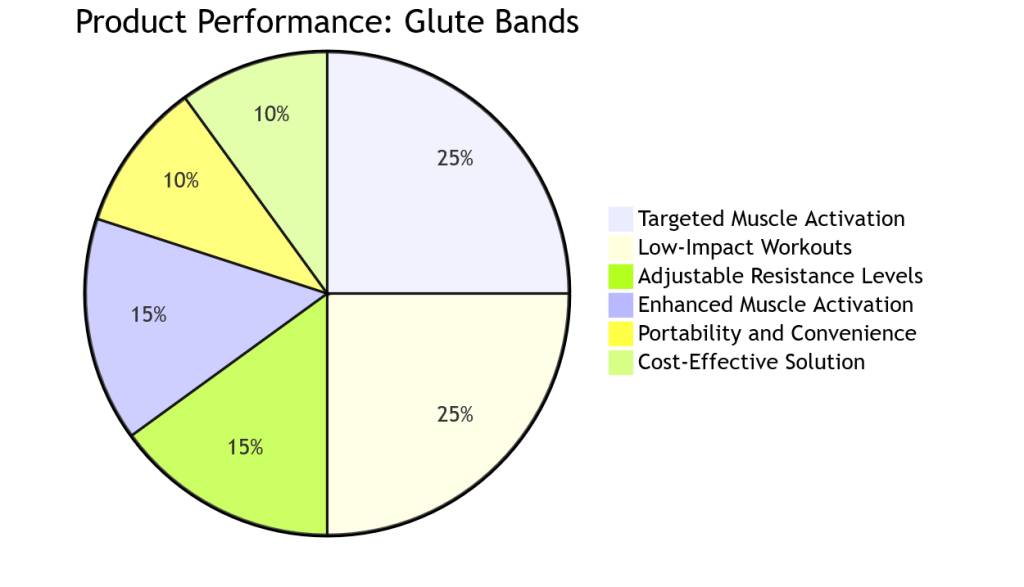
Low-Impact Workouts
Glute bands provide low-impact workouts that are gentle on the joints while still effectively targeting the muscles around the knees.
Glute bands can strengthen the muscles around the knees without subjecting them to excessive stress or strain during exercises such as lateral walks, clamshells, and donkey kicks. This makes them suitable for individuals with knee issues or those recovering from injuries.
Enhanced Muscle Activation
Glute bands promote enhanced muscle activation and engagement due to their design, which provides constant tension on the muscles throughout the entire range of motion.
This targeted activation of the lower body muscles helps improve muscle strength, endurance, and coordination, ultimately leading to better knee stability and function.
Portability and Convenience
Glute bands are lightweight, compact, and easy to transport, making them ideal for home workouts, travel, or outdoor exercise sessions.
Whether you’re at home, in the gym, or on the go, glute bands provide a convenient and accessible way to strengthen your knees and improve lower body strength without the need for bulky equipment or expensive gym memberships.
Cost-Effective Solution
Glute bands are a cost-effective solution for knee strengthening, offering excellent value for money compared to other forms of exercise equipment or gym memberships.
With a one-time investment in a set of glute bands, you gain access to a versatile and efficient tool for targeting the muscles around the knees and enhancing overall knee health. Additionally, glute bands are durable and long-lasting, providing you with a reliable and budget-friendly option for knee strengthening.
Suspension Trainer vs Resistance Bands vs Glute Bands
When it comes to choosing the right exercise equipment for knee strengthening, there are several factors to consider.
Let’s compare suspension trainers, resistance bands, and glute bands across various aspects relevant to knee strengthening:
Tips From Erik
“Choose your equipment wisely: Resistance bands lead in simplicity, suspension trainers and resistance bands tie in versatility, while all offer joint-friendly workouts. But for the most convenient and effective knee strengthening, go with resistance bands.”

Owner of hometraininghero
Ease of Use
Suspension Trainer: Suspension trainers typically require a bit of a learning curve to master proper form and technique, especially for beginners. However, once you get the hang of it, they’re relatively straightforward to use.
Resistance Bands: Resistance bands are incredibly easy to use, making them suitable for individuals of all fitness levels. Simply anchor them to a stable surface and start your workout.
Glute Bands: Glute bands are also straightforward to use, requiring minimal setup. Just slide them up your legs and start your exercises.
Winner: Resistance Bands – Due to their simplicity and ease of use, resistance bands take the lead in this category.
Versatility
Suspension Trainer: Suspension trainers are highly versatile, allowing for a wide range of exercises targeting various muscle groups, including those around the knees.
Resistance Bands: Resistance bands are incredibly versatile, offering countless exercise options for strengthening the knees and lower body.
Glute Bands: Glute bands are primarily designed for lower body exercises, making them less versatile compared to suspension trainers and resistance bands.
Winner: Suspension Trainer and Resistance Bands – Suspension trainers and resistance bands tie for versatility, offering a wide range of exercise options for knee strengthening.
Impact on Joints and Tendons
Suspension Trainer: Suspension trainers provide low-impact workouts that are gentle on the joints, making them suitable for individuals with knee issues or injuries.
Resistance Bands: Like suspension trainers, resistance bands offer low-impact workouts that minimize stress on the joints and tendons.
Glute Bands: Glute bands also provide low-impact workouts, making them ideal for individuals looking to strengthen their knees without risking injury.
Winner: Suspension Trainer, Resistance Bands, and Glute Bands – All three equipment types offer low-impact workouts, making them equally beneficial for knee strengthening.
Portability
Suspension Trainer: Suspension trainers are portable but may require anchoring to a sturdy surface, limiting their usability in certain environments.
Resistance Bands: Resistance bands are lightweight, compact, and portable, making them perfect for home workouts, travel, or outdoor exercise sessions.
Glute Bands: Glute bands are also lightweight and portable, offering convenience for on-the-go workouts.
Winner: Resistance Bands and Glute Bands – Resistance bands and glute bands tie for portability, providing convenient options for knee strengthening wherever you go.
Winner Overall
After careful consideration of the factors relevant to knee strengthening, Resistance Bands emerge as the overall winner.
They offer ease of use, versatility, low-impact workouts, and portability, making them an excellent choice if you are looking to strengthen your knees effectively and conveniently. However, both suspension trainers and glute bands have their merits and can be valuable additions to a well-rounded workout routine focused on knee strengthening.
Ultimately, the best choice depends on individual preferences, goals, and specific needs.
Frequently Asked Questions
When it comes to strengthening knees, several gym equipment options can be highly effective.
Among the top choices are suspension trainers, resistance bands, and glute bands. These tools offer adjustable resistance levels, low-impact workouts, and versatile exercise options specifically targeting the muscles around the knees.
Incorporating any of these equipment types into your routine can help improve knee strength, stability, and overall joint health.
Bodyweight Squats: Stand with your feet shoulder-width apart, lower yourself into a squat position, keeping your knees aligned with your toes and your back straight. Return to the starting position by pushing through your heels.
Lunges: Take a step forward with one foot and lower your body until both knees are bent at a 90-degree angle. Push through the heel of your front foot to return to the starting position.
Leg Raises: Lie on your back with one leg bent and the other extended straight. Lift the straight leg towards the ceiling, engaging your quadriceps, then lower it back down slowly. Repeat on both sides.
To strengthen weak knees, it’s essential to incorporate a combination of exercises, proper form, and gradual progression.
Focus on low-impact exercises that target the muscles around the knees, such as squats, lunges, and leg raises. Additionally, prioritize exercises that improve flexibility, balance, and stability, such as yoga or Pilates.
Gradually increase the intensity and duration of your workouts as your knee strength improves, but always listen to your body and avoid overexertion.
For individuals undergoing knee replacement surgery or dealing with post-rehabilitation, the best exercise equipment is often those that offer low-impact workouts and allow for gradual progression.
Options such as stationary bikes, elliptical trainers, and aquatic therapy equipment can be beneficial for improving knee strength, range of motion, and overall joint function without putting excessive stress on the replaced knee.
Yes, incorporating weights into your workout routine can help strengthen the muscles around the knees, ultimately improving knee stability and function. However, it’s essential to use proper form and start with lighter weights to avoid injury.
Exercises such as squats, lunges, and leg presses with added resistance can be effective for building strength in the lower body, including the muscles around the knees. Always consult with a fitness professional or physical therapist before starting a weight training program, especially if you have pre-existing knee issues or injuries.




